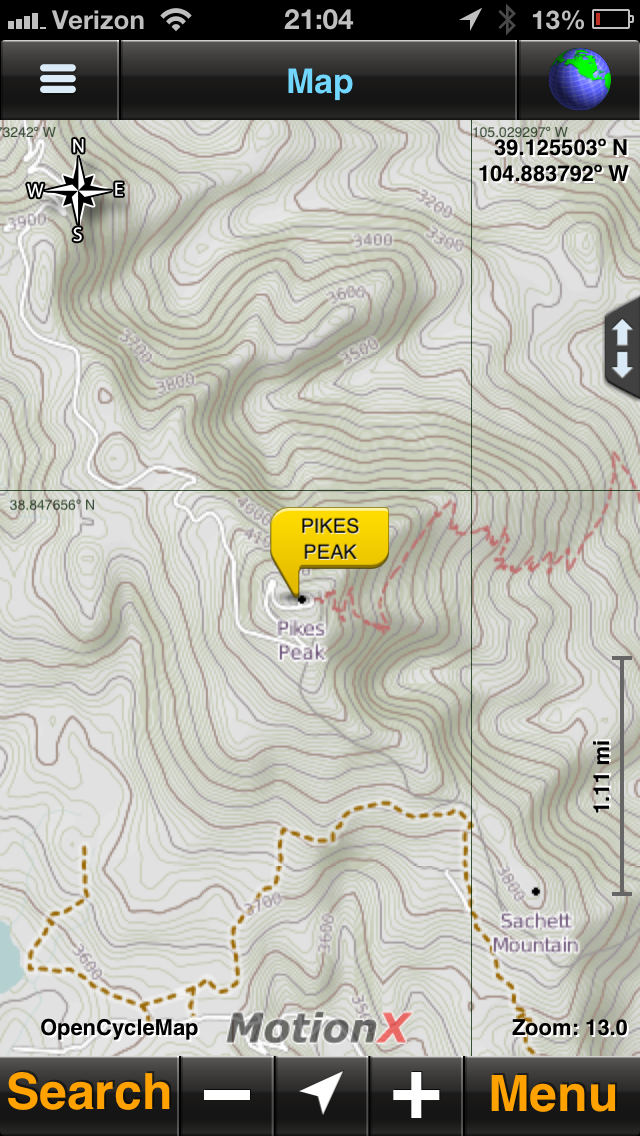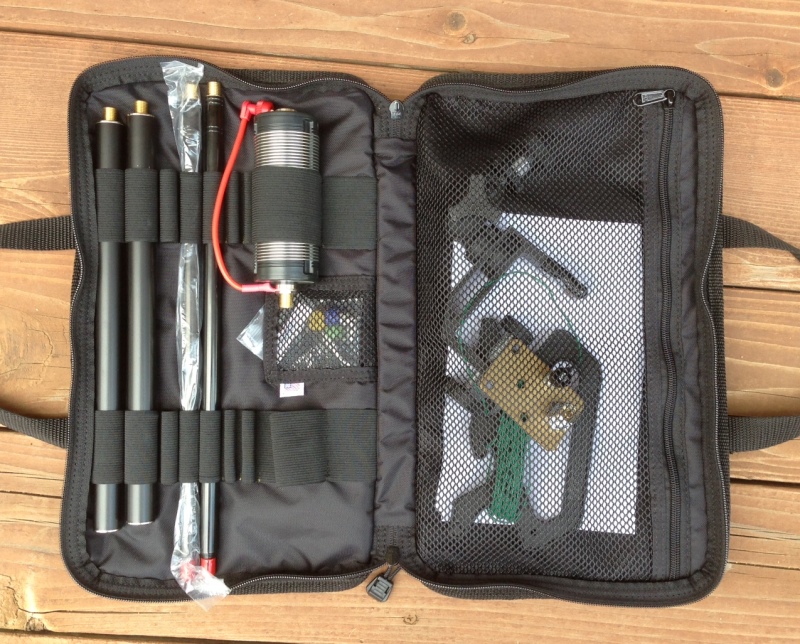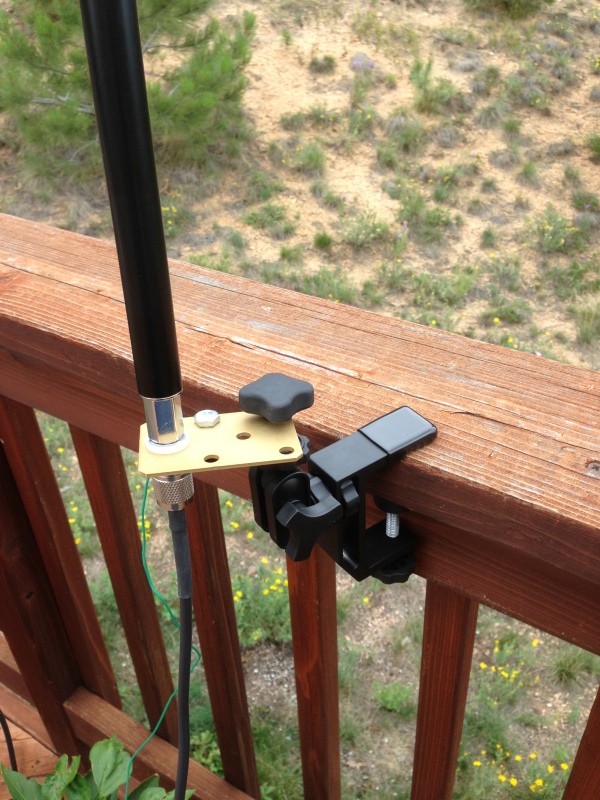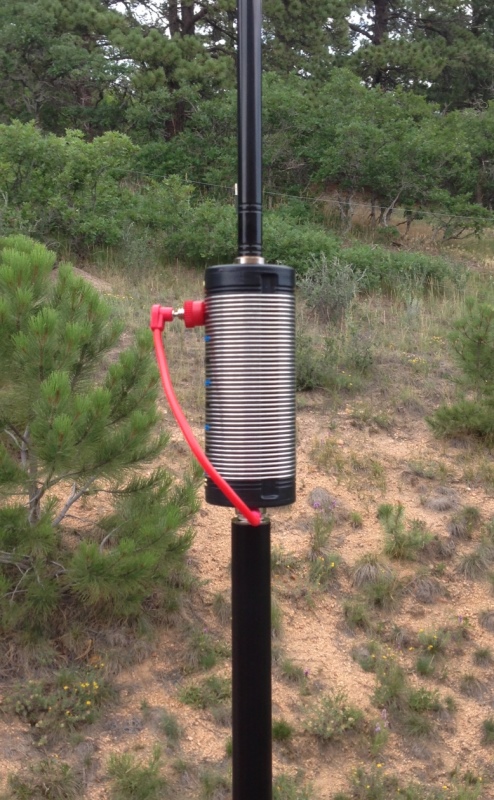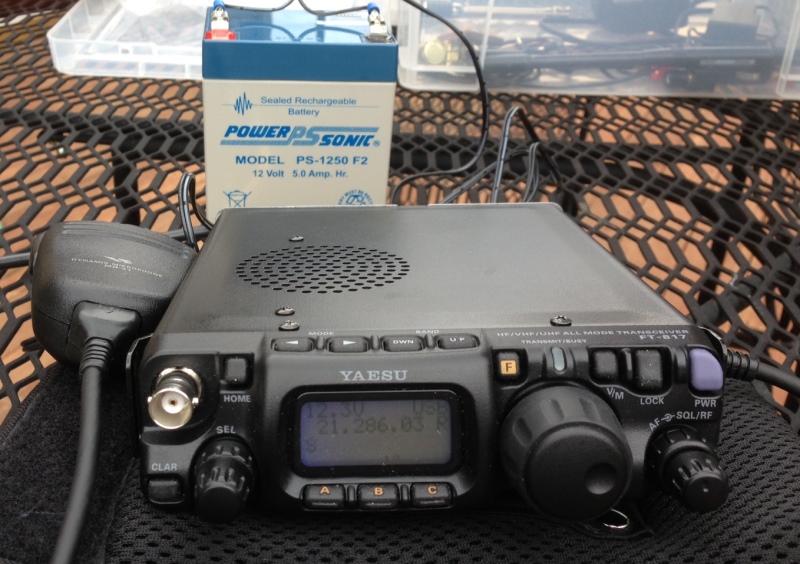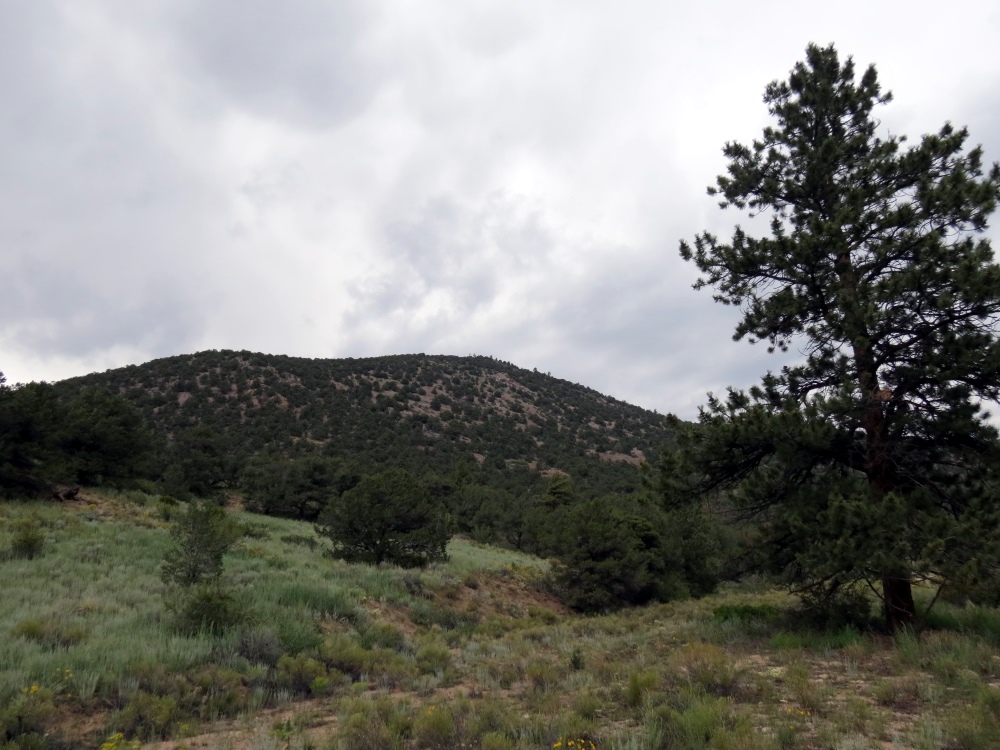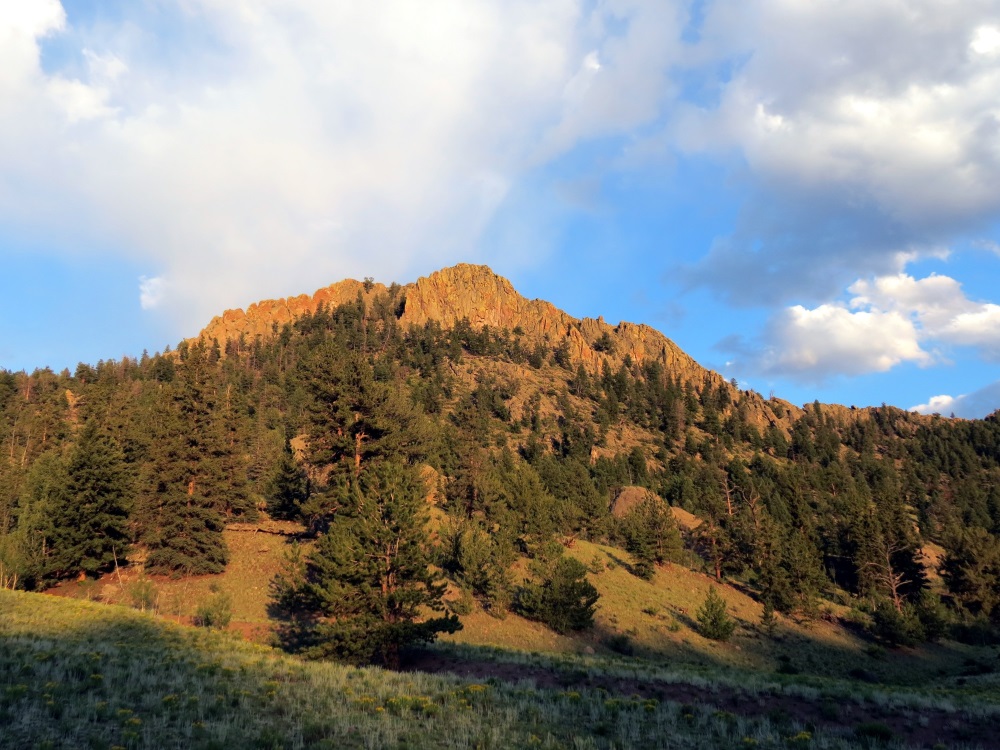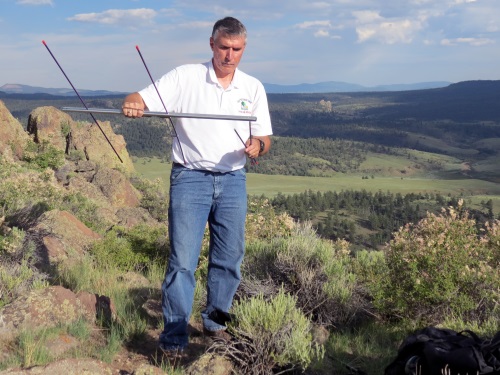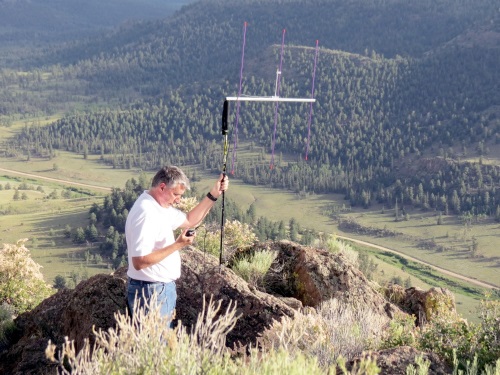Author Archive
 Awesome App for Hiking: MotionX GPS
Awesome App for Hiking: MotionX GPS
I’ve tried out a number of mapping apps on my iPhone but only recently found one that I really like for hiking. Most of these apps access maps on the network when needed so they are not stored on the smart phone. When you fall of the edge of the network in the backcountry they don’t work. This is a non starter for most of my backcountry hikes. Even if I am close to civilization, I’ll typically drop down into a valley at some point on the hike, losing my network connection.
The MotionX GPS app solves this problem by allowing you to download and storing maps on your iPhone. This requires you to do a bit of planning on what maps you need but it seems to work pretty well. The map quality is good and includes topographic information. (Click on the map image above to zoom in.) No, you probably don’t want to download maps to cover the entire US as you’ll consume all available storage!
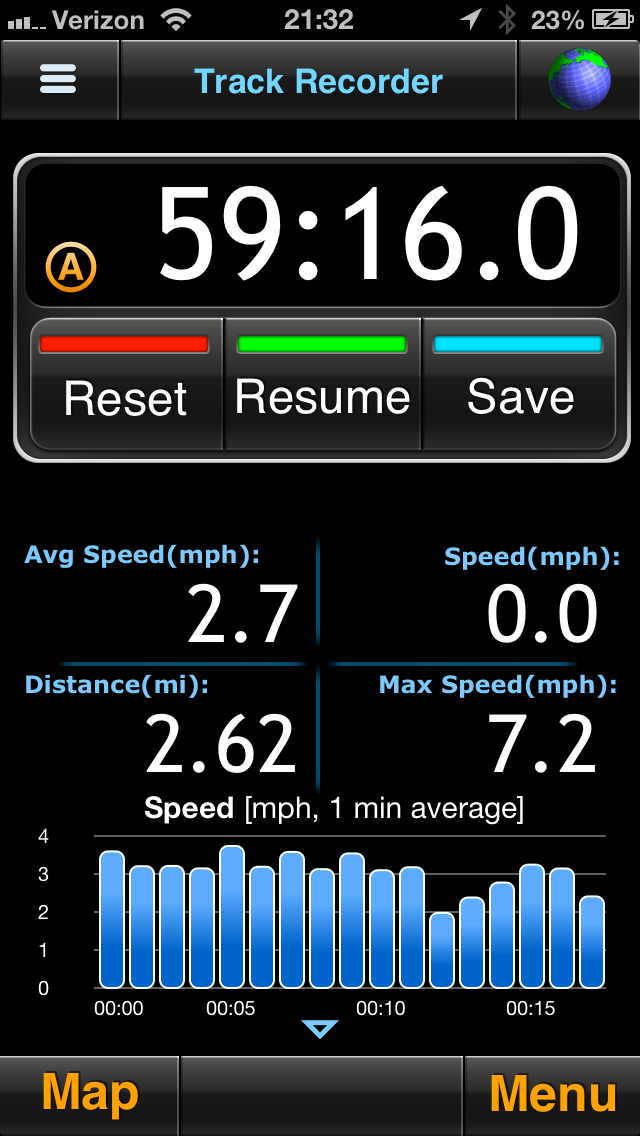
Besides mapping, MotionX supports a ton of other features such as tracks, waypoints, compass headings, etc. It is quite flexible and I am still learning all of its tools.
Oh, did I mention this app only costs $1.99? Amazing!
- Bob K0NR
 Trying Out the Buddistick Antenna
Trying Out the Buddistick Antenna
At the Dayton Hamvention, I had picked up the Buddistick™ Deluxe Package portable HF antenna. This antenna is very popular with the Summits On The Air crowd and other QRP enthusiasts. Usually when I am doing SOTA activations, its all about VHF. But being a self-proclaimed HF Slacker, I might get on HF sometime from a summit, so having a Buddistick available seems like a good idea.
I decided I better check this thing out to see if I can make it work on our back deck.
After actually reading the instructions, I assembled the antenna and used the clamp mount to attach the antenna on our deck railing. I strung the single radial out on the deck to the recommended length and connected up the transceiver using a short length of RG-8X cable.
Then I used the “by ear” tuning technique to set the tap on the antenna coil. You basically just run the tap down the coil to find the spot that produces the highest noise level at the transceiver. I checked the match using the built-in SWR meter in the Yaesu FT-817 and verified that it was good.
At first, I tried 20 Meters and discovered an S6 noise level. Not good. Retuning the antenna, I moved up to 15 Meters and found the noise level to be much lower. I also heard a few strong stations working the North American QSO Party.
I tuned around on the SSB portion of the band and found Bob N4BP calling CQ Contest so I gave him a quick call. He came back to me right away and I gave him the contest exchange of name and state. QSL and I was in his log, no problem! I heard N8II calling and repeated the same exchange, no sweat.
Hey, this QRP stuff really works!
So that was a great first experience with the Buddistick. Now I need to try it from a summit.
73, Bob K0NR
 Two SOTA Activations: W0/SP-099 and SP-115
Two SOTA Activations: W0/SP-099 and SP-115
Lately, I have been focusing on activating the SOTA (Summits On The Air) peaks near our cabin in the mountains. The basic idea is to identify a SOTA summit, hike to the top and make a few contacts on VHF. On Friday, my spousal unit (Joyce, K0JJW) and I decided to head out to an unnamed peak (W0/SP-099), southeast of Buena Vista, CO. By no coincidence, this summit had not been activated yet, so we’d get the esteemed honor and glory of being the first.
For lesser known summits, a bit of research is required to figure out the route. My first stop is to check the SOTA database for basic information on the summit. I’ll usually have to dig further using ListsOfJohn and SummitPost. ListsOfJohn is an incredible database of topographical information, listing every summit along with information such as elevation, lat/lon, rise, etc. (The Colorado SOTA information was gleaned from ListsOfJohn.) SummitPost will usually have more detailed information on a summit but only for the more popular ones. The SOTA Mapping Project is another excellent resource with very useful interactive topo maps. And, of course, I also dig out the US Forest Service map for the area, which often gives the best view of access roads.
We drove the Jeep to within a mile of the summit and started hiking up. I posted our route information on ListsOfJohn, so take a look there for that information. The summit is unnamed, so it is referred to by its elevation: 10123. I had my Yaesu VX-8GR burping out APRS packets which were plotted on aprs.fi when we reached the summit.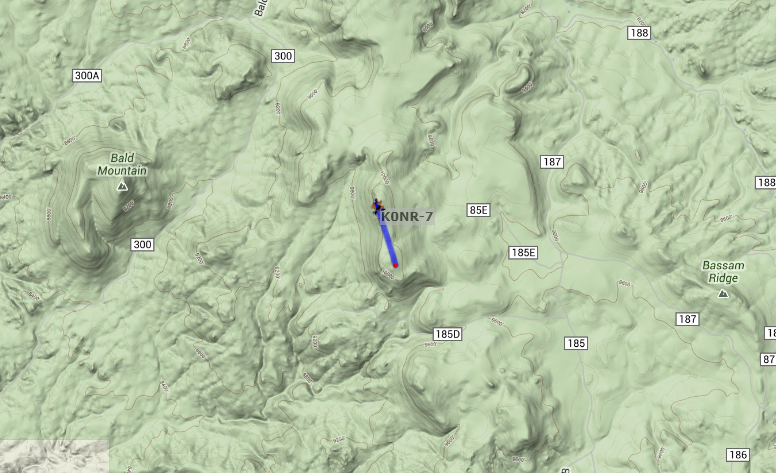
When we reached the summit, I spotted myself on the SOTAWatch web site using the SOTA Goat app on my smartphone. More importantly, the night before the hike, I sent an email to some of the radio amateurs that were likely to be within VHF range. That paid off and I worked Jim KD0MRC, Walt WZ0N and John K3NOQ on 146.52 MHz FM. Jim was hiking to Harvard Lakes above 10,000 feet, so it was special to be able to contact him on the trail. A little later, I caught KV4AL who was mobile near the top of Mount Evans. While only one contact is required to “activate” a summit, four contacts are needed to earn SOTA points, so I was happy to make these four QSOs. My gear was a Yaesu FT-60 driving a 3-element Arrow yagi antenna.
In addition, Joyce and I generally work each other on the SOTA the summit. The SOTA rules say that “QSOs with others within the same Activation Zone do not count towards the QSO total” which means that one of us needs to hike down a bit to get outside of the activation zone (75 feet vertical feet from the summit). We take turns doing this so that each of us activates the summit and makes a contact with the summit.
We took a round about path back to the Jeep and headed for Bald Mountain. At this point, we were both very tired and the thunderstorms were moving in. We decided to at least check out the access to Bald Mountain (Wo/SP-115) even if we didn’t climb it that day. It turns out that there is a 4WD road that goes to the top of the mountain, so we drove to the summit. The road is very rough in a few spots but the Jeep handled it nicely. At the top, we hiked back down a bit to meet the non-motorized ascent requirement for SOTA. We also did our “work each other” technique while on the mountain so that we each had a contact. I was not able to raise anyone on 146.52 MHz but I did catch Carl K5UK on the 146.745 MHz repeater and worked him on simplex. By this time, it was raining with lightning getting closer, so we abandoned the summit and headed back to the cabin.
Thanks to the guys that took the time to contact us on the two summits.
73, Bob K0NR
 A Little Mountaintop Video
A Little Mountaintop Video
While digging through the archives, I came across some previously unseen video from the 2012 Colorado 14er Event. Joyce KØJJW and I operated from Mount Sneffels (SOTA W0/UR-001) and this video shows a radio contact with Mark KTØAM on Mount Shavano.
The 2013 event will be held August 4th, see www.14er.org.
 Summits On The Air (W0/SP-112) – Castle Rock
Summits On The Air (W0/SP-112) – Castle Rock
There is a very jagged peak just east of Buena Vista, CO called Castle Rock (not to be confused with the city by the same name). I knew this was a SOTA summit (W0/SP-112) and I had my eye on it for a while now. It is extremely rocky and jagged near its summit, so I was not sure if it could be ascended without a technical climb. A little research revealed that it was climbable but quite steep near the top. SummitPost.org has a good description of how to ascend this peak.
My hiking partner and wife, Joyce K0JJW, joined me on the climb. We managed to get off the preferred route and got into some very steep rock scrambling. Good judgment prevailed and we regrouped and found a more reasonable path but probably cost us an extra hour of hiking. As advertised, it did get very steep at the top. (Study the SummitPost information more carefully than I did.)
Recently, I picked up an Arrow 3-element Yagi antenna for 2 Meters (Model 146-3). This antenna can be dismantled and carried inside a reasonable size daypack (or strapped on externally). The boom has two threaded holes for mounting the antenna on a camera tripod. I used a MountainSmith trekking pole that can double as a camera monopod and mounted the antenna on it.
For this SOTA activation, I kept it simple and just used my Yaesu FT-60 to work 2 Meter FM. Accordingly, I configured the Yagi antenna for vertical polarization. (There are two mounting holes on the boom, so you can choose vertical or horizontal orientation.)
The trekking pole is not self-supporting and does not provide much additional antenna height but it makes the antenna a lot easier to point for extended periods of time. I like to use a trekking pole for hiking, so this is a good way to get a little extra utility out of it. I am pleased with how this antenna system performed and will use it again.
73, Bob K0NR
 This Spewed Out of the Internet #25
This Spewed Out of the Internet #25
 Here’s another update of
Here’s another update of interesting important stuff spewing forth from the internet.
I put my two presentations from HamCon Colorado out on the web: Practical Amateur Radio Measurements and Mountaintop VHF in the Colorado High Country . Also, check out Kelly N0VD’s blog posting on the event.
Having trouble finding a repeater to use on VHF? Check out my Shack Talk article on HamRadioSchool.com
KB5WIA provides some good tips on EME operating.
Hans PD0AC addresses the question: What’s the Best Chinese Dual-band HT? For best price/performance, he selected Baofeng UV-B5/UV-B6 (and I agree).
The Noise Blankers continue to publish their Ham Hijinks. Remember: Do Not Take These Guys Seriously. Seriously. Do not do this. Seriously.
There’s lots of great ham radio events coming up this summer. This weekend is the CQ Worldwide VHF Contest, the only “true VHF contest” out there since only the 50 MHz and 144 MHz bands are used. Then there’s the Colorado 14er Event, which includes Summits On The Air (SOTA) activations, on August 4th. (Don’t forget to check out the great new Colorado 14er Shirts!) The Colorado QSO Party is another great operating event, on August 31st.
Remember: There is no such thing as ground.
Think about it: an infinitely large electrical node with zero impedance able to sink an infinite current. Not likely.
73, Bob K0NR
 Announcing Technician License Class – Oct 19/26
Announcing Technician License Class – Oct 19/26
 Ham Radio Two-Day License Class
Ham Radio Two-Day License Class
Monument, Colorado
Sat Oct 19 and Sat Oct 26 (8 AM to 5 PM) 2013
Location: Tri-Lakes Monument Fire Station 1
The Technician license is your gateway to the world-wide excitement of Amateur Radio …
- Earn your ham radio Technician class radio privileges
- Pass your FCC amateur radio license exam right in class on the second day
- Multiple-choice exam, No Morse Code Required
- Live equipment demonstrations
- Learn to operate on the ham bands, 10 Meters and higher
- Learn to use the many VHF/UHF FM repeaters in Colorado
- Find out how to participate in emergency communications
There is a $25 registration fee for the class.
In addition, students must have the required study guide:
HamRadioSchool.com Technician License Course $19.95
Advance registration is required (no later than one week before the first session, earlier is better!)
To register for the class, contact: Bob Witte KØNR
Email: bob@k0nr.com or Phone: 719 659-3727
Sponsored by the Tri-Lakes Monument Fire Radio Association
For more information on amateur (ham) radio visit www.arrl.org
or www.wedothat-radio.org
